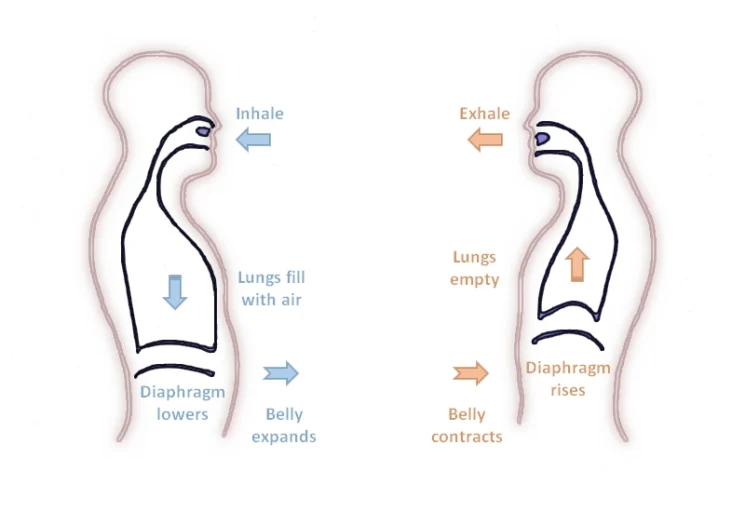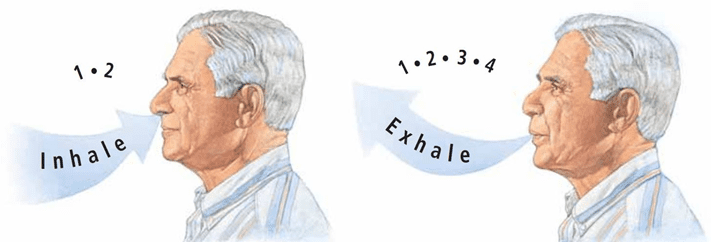Ever wondered if the secret to a stress-free life lies in something as simple as a breath? Spoiler alert: it does! Enter the world of deep breathing, your ticket to serenity. Ready to breathe your way to a calmer you?
In today’s fast-paced world, stress has become a constant companion for many. The demands of daily life can take a toll on our physical and mental well-being, making stress relief essential for maintaining a healthy lifestyle. One effective and accessible way to alleviate stress is through deep breathing techniques. In this article, we’ll explore the science behind deep breathing and delve into various techniques that can provide quick stress relief.
Understanding Stress
Stress, in its various forms, can be triggered by an array of factors ranging from work-related pressures to personal challenges and environmental stimuli. Recognizing these triggers is the first step towards effective stress management. It’s not a one-size-fits-all scenario; stress manifests differently in each individual.
The effects of stress are not limited to mere discomfort; stress can have profound impacts on our physical and mental well-being. From heightened blood pressure and increased heart rate to compromised immune function, the toll on the body is undeniable. On a mental level, stress can contribute to anxiety, depression, and a host of other cognitive challenges.
The Role of Deep Breathing in Stress
Why does this matter in the context of deep breathing techniques? Because to effectively combat stress, one must grasp its nuances. Deep breathing, as a stress relief tool, doesn’t just provide a momentary reprieve. It addresses the very mechanisms that stress activates in our body.
By understanding stress, we empower ourselves to choose the most fitting deep breathing technique. Each technique has its unique advantages, and knowing the specific stressors one faces allows for a targeted and personalized approach.
Deep breathing acts as a powerful antidote to stress by activating the body’s relaxation response. When we breathe deeply and consciously, it signals the nervous system to calm down, reducing the production of stress hormones. This, in turn, promotes a sense of tranquility and mental clarity.
So, let’s unravel the intricacies of stress, laying the groundwork for a more profound appreciation of the deep breathing practices that follow.
Benefits of Deep Breathing in Relieving Stress
1. Calms the Nervous System
Deep breathing activates the parasympathetic nervous system, promoting a state of relaxation and countering the stress-induced fight-or-flight response.
2. Reduces Stress Hormones
By signaling the body to release fewer stress hormones, deep breathing helps alleviate the physiological impact of stress.
3. Lowers Blood Pressure
The rhythmic and controlled nature of deep breathing contributes to lower blood pressure, reducing the strain on the cardiovascular system associated with stress.
4. Promotes Emotional Well-Being
Deep breathing creates a moment of mindfulness, fostering emotional resilience and providing a buffer against the negative effects of stress.
5. Enhances Mental Clarity:
The increased oxygen intake through deep breathing supports cognitive function, improving focus and clarity of thought during stressful situations.
6. Encourages Mind-Body Connection:
The conscious focus on breath brings attention to the present moment, fostering a mind-body connection that aids in stress reduction and overall well-being.
7. Improves Sleep Quality:
Incorporating deep breathing into a bedtime routine helps calm the mind, making it easier to unwind and promoting better sleep quality, essential for stress recovery.
8. Balances Stress Hormones:
Deep breathing regulates the balance between stress-inducing hormones like cortisol and those associated with relaxation, contributing to a more harmonious hormonal profile.
9. Promotes Relaxation Response:
Deep breathing triggers the relaxation response, a physiological state opposite to stress, leading to a sense of calm and tranquility.
10. Enhances Coping Mechanisms
Regular practice of deep breathing equips individuals with effective coping mechanisms, empowering them to manage and navigate stress more efficiently.
Incorporating deep breathing into your daily routine can be a powerful ally in the ongoing battle against stress, offering a natural and accessible means to find calm amidst life’s challenges.
Different Deep Breathing Techniques
1. Diaphragmatic Breathing
Diaphragmatic breathing involves deep inhalation, expanding the diaphragm, and slow exhalation, promoting relaxation and enhanced respiratory function.
Step-by-Step Guide:
- Find a quiet space to sit or lie down.
- Place one hand on your chest and the other on your abdomen.
- Inhale slowly through your nose, allowing your abdomen to rise while keeping your chest still.
- Exhale slowly through pursed lips, feeling your abdomen fall.
- Focus on the expansion and contraction of your diaphragm.
- Practice for 5-10 minutes, gradually increasing duration.
Benefits:
- Enhances oxygen intake for improved respiratory function.
- Promotes relaxation and reduces stress hormones.
2. Box Breathing
Box breathing is a rhythmic technique where inhalation, breath holding, exhalation, and another breath hold each occur for a specific count.
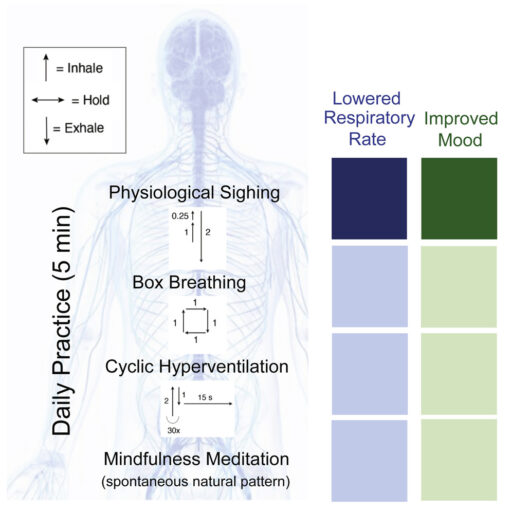
Step-by-Step Guide:
- Sit or stand comfortably with your back straight.
- Inhale through your nose for a count of four.
- Hold your breath for a count of four.
- Exhale completely through your mouth for a count of four.
- Pause and hold your breath for another count of four.
- Repeat the cycle, gradually increasing the count.
- Aim for 4-6 cycles per session.
Benefits:
- Induces calmness and balance in the nervous system.
- Enhances focus and concentration.
3. The 4-7-8 Technique
The 4-7-8 technique involves a specific breathing pattern: inhale for four counts, hold for seven counts, and exhale for eight counts.
Step-by-Step Guide:
- Exhale completely through your mouth, making a whoosh sound.
- Inhale quietly through your nose for a count of four.
- Hold your breath for a count of seven.
- Exhale through pursed lips for a count of eight.
- Repeat the cycle, gradually increasing the count.
- Initially, complete four breath cycles.
Benefits:
- Facilitates quick relaxation and stress reduction.
- Improves sleep quality and aids in anxiety management.
4. Alternate Nostril Breathing
Alternate nostril breathing involves inhaling and exhaling through one nostril at a time, balancing energy flow.
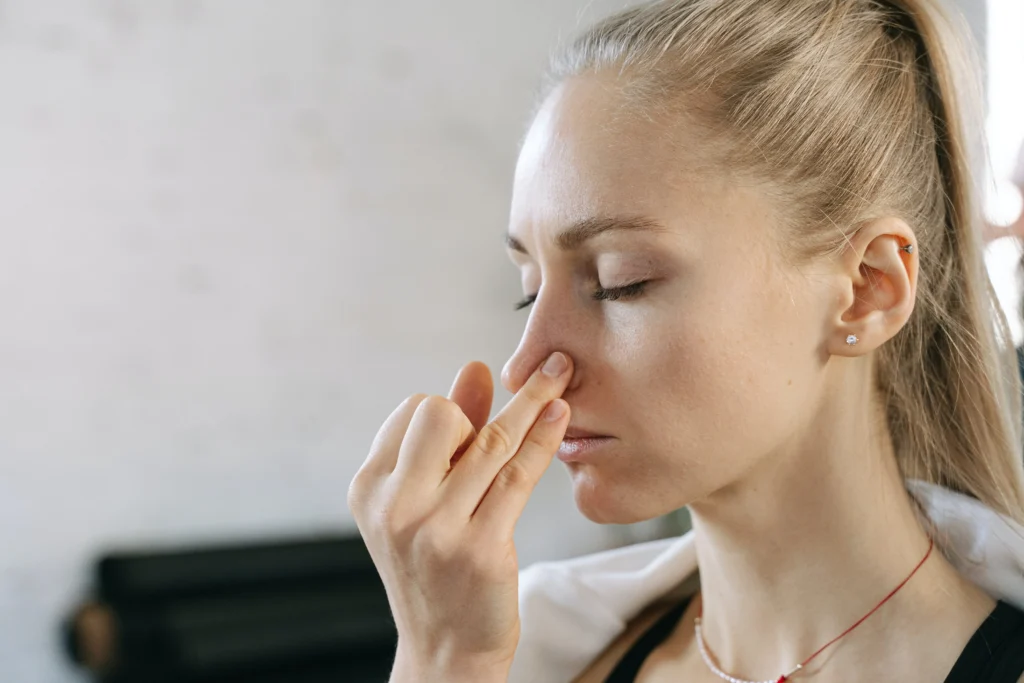
Step-by-Step Guide:
- Sit comfortably with a straight spine.
- Inhale through your left nostril.
- Close the left nostril and exhale through the right.
- Inhale through the right nostril.
- Close the right nostril and exhale through the left.
- Repeat for 5-10 minutes, maintaining a slow and controlled pace.
Benefits:
- Balances energy flow and promotes mental clarity.
- Calms the nervous system and reduces stress.
5. Pursed Lip Breathing
Pursed lip breathing entails inhaling slowly through the nose and exhaling through pursed lips, promoting controlled breaths.
Step-by-Step Guide:
- Sit comfortably with your back straight.
- Inhale through your nose for a count of two.
- Pucker your lips and exhale slowly through pursed lips for a count of four.
- Focus on deliberate and controlled breaths.
- Repeat for several breath cycles, gradually extending the duration.
Benefits:
- Slows breathing rate and improves oxygen exchange.
- Relieves shortness of breath and enhances lung function.
6. Breath Focus Technique
Step-by-Step Guide:
- Sit or lie down in a quiet space.
- Close your eyes and take deep breaths.
- Focus on the sensation of your breath.
- If your mind wanders, gently bring your focus back to your breath.
- Practice for 5-20 minutes, gradually increasing duration.
Benefits:
- Enhances mindfulness and reduces mental distractions.
- Promotes a sense of inner calm and relaxation.
7. Lion’s Breath
Lion’s breath involves inhaling deeply and exhaling forcefully through an open mouth while sticking out the tongue.
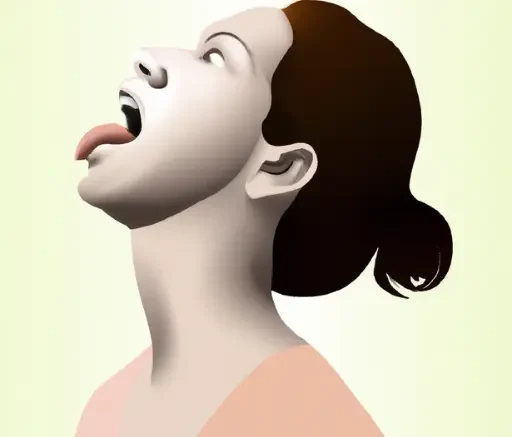
Step-by-Step Guide:
- Sit comfortably with a straight spine.
- Inhale deeply through your nose.
- Exhale forcefully through your mouth, making a “ha” sound.
- Widen your eyes and stretch your fingers.
- Repeat for several breath cycles, releasing tension.
Benefits:
- Relieves tension in the face, jaw, and throat.
- Energizes and refreshes the mind.
8. Equal Breathing
Equal breathing focuses on maintaining an equal duration for both inhalation and exhalation, promoting balance.
Step-by-Step Guide:
- Sit or lie down comfortably.
- Inhale through your nose for a count of four.
- Exhale through your nose for a count of four.
- Maintain equal counts for inhalation and exhalation.
- Gradually increase the count as you become more comfortable.
- Practice for 5-10 minutes, focusing on balanced breath cycles.
Benefits:
- Improves concentration and balances the nervous system.
- Promotes relaxation and reduces stress.
Resonant or Coherent Breathing
Resonant or coherent breathing involves inhaling and exhaling at a specific, steady rhythm to create a harmonious pattern.
Step-by-Step Guide:
- Find a comfortable position and close your eyes.
- Inhale through your nose for a count of five.
- Exhale for a count of five.
- Maintain a steady rhythm for a coherent and resonant pattern.
- Focus on the breath’s calming effect on the nervous system.
- Practice for 10-20 minutes, gradually extending the duration.
Benefits:
- Enhances emotional well-being and reduces anxiety.
- Improves heart rate variability for better cardiovascular health.
Sitali Breath
Sitali breath involves inhaling air through a curled tongue or slightly parted teeth, creating a cooling sensation.
Step-by-Step Guide:
- Sit comfortably with your spine straight.
- Inhale through a curled tongue or over slightly parted teeth, creating a hissing sound.
- Exhale completely through your nose.
- Repeat for several breath cycles, experiencing a cooling effect.
Benefits:
- Cools the body and reduces body heat.
- Calms the mind and soothes irritability.
Humming Bee Breath
Humming bee breath involves inhaling deeply and exhaling while making a humming sound, promoting relaxation.
Step-by-Step Guide:
- Find a quiet space to sit comfortably.
- Inhale deeply through your nose.
- Exhale slowly while making a humming sound, like a bee.
- Feel vibrations in your head and chest.
- Repeat for several breath cycles, promoting relaxation.
Benefits:
- Relieves tension in the face and head.
- Calms the mind and reduces anxiety.
Belly Breathing
Belly breathing involves lying on your back, inhaling deeply through the nose, and allowing the abdomen to rise.
Step-by-Step Guide:
- Lie on your back with knees bent and hands on your abdomen.
- Inhale through your nose, allowing your abdomen to rise.
- Exhale through your mouth, feeling your abdomen fall.
- Focus on the rise and fall of your abdomen, minimizing chest movement.
- Practice for 5-10 minutes, enhancing diaphragmatic breathing.
Benefits:
- Strengthens the diaphragm and improves lung capacity.
- Promotes relaxation and reduces stress.
Mindfulness Breathing
Mindfulness breathing involves sitting comfortably, closing your eyes, and observing the natural inhalation and exhalation without control.
Step-by-Step Guide:
- Sit comfortably with a straight back.
- Close your eyes and bring attention to your breath.
- Observe inhalation and exhalation without controlling it.
- Gently guide your focus back to your breath if your mind wanders.
- Practice for 10-20 minutes, gradually increasing duration.
Benefits:
- Enhances mindfulness and present moment awareness.
- Reduces stress and promotes overall well-being.
Experiment with these deep breathing techniques to discover which suits you best. Incorporate them into your routine to enjoy their unique benefits and promote overall physical and mental well-being.
Incorporating Deep Breathing into Daily Life
In the fast-paced rhythm of daily life, finding moments for tranquility becomes essential and to infuse calm into the cadence of your routine.
1. Commute Serenity: Turn your commute into a mindful journey. Whether in traffic or on public transport, use the time to practice deep breathing. Inhale the calm, exhale the chaos.
2. Desk Reset: Amidst deadlines and emails, carve out brief deep-breathing breaks. Reset your mind at your desk, promoting mental clarity and heightened focus for the tasks ahead.
3. Mealtime Mindfulness: Before diving into your meal, take a moment. Inhale deeply, savoring the aroma. Exhale, letting go of the day’s tensions. Transform eating into a mindful ritual.
4. Nature Connection: Take your deep breaths outdoors. Whether a park, garden, or balcony, nature enhances the calming effect. Let the natural world synchronize with your breath.
5. Tech Timeout: Amidst the digital buzz, create tech timeouts. Put the screens aside, close your eyes, and indulge in deep, conscious breaths. Unplug to reconnect with yourself.
6. Pre-Sleep Peace: Cap the day with deep breathing. In bed, inhale serenity, exhale the day’s residue. Transform bedtime into a ritual, inviting peaceful dreams with each breath.
7. Family Bonding Breath: Extend deep breathing to family time. Gather everyone for a brief session. Connect through synchronized breaths, fostering a shared sense of calm.
8. Queue Meditation: Waiting in line doesn’t have to be tedious. Turn it into a mindful moment. Inhale patience, exhale tension, and turn an ordinary wait into a therapeutic pause.
9. Stress-Relief Alarms: Set alarms throughout the day as gentle reminders. Pause when they chime, and indulge in a few moments of deep breathing. Break the stress cycle proactively.
10. Social Media Breathers: Integrate deep breathing into your social media routine. Before scrolling, take a few breaths. Let the positive energy of deep breathing guide your online experience.
This isn’t about adding tasks to your schedule; it’s about transforming existing moments into opportunities for deep breathing. “Incorporating Deep Breathing into Daily Life” isn’t a prescription; it’s an invitation to infuse tranquility into every heartbeat of your day. Ready to breathe life into your daily rituals? Let’s embark on this seamless integration journey together.
Combining Deep Breathing with Mindfulness
When you blend mindfulness with deep breathing, you’re creating a powerhouse against stress. Your breath becomes a tool to anchor you in the present, while mindfulness helps you observe thoughts without getting caught up in them. Deep breathing adds a rhythmic touch, making each breath a reminder to stay focused on now.
Each breath isn’t just a routine; it’s a chance to be fully present. Together, deep breathing and mindfulness turn stress into calm. They dissolve worries, making everyday activities, like making tea or doing chores, moments of mindfulness.
It’s not just about trying new practices; it’s about embracing a lifestyle where every breath contributes to a more peaceful and focused life. Let’s explore how this powerful combination can enhance your daily well-being.
Final Thoughts
Deep breathing is a simple yet potent tool for quick stress relief. By understanding its mechanisms, exploring various techniques, and incorporating them into your daily life, you can unlock a path to enhanced well-being. The journey to stress relief begins with a single breath—a conscious, deep breath that can transform your body and mind.
Frequently Asked Questions (FAQs)
What is the correct way to deep breathe?
The correct way to deep breathe involves inhaling slowly through your nose, allowing your abdomen to rise, and exhaling gradually through pursed lips, focusing on diaphragmatic expansion.
What is the 4-7-8 breath method?
The 4-7-8 breath method involves inhaling quietly through your nose for four counts, holding your breath for seven counts, and exhaling audibly through pursed lips for eight counts. It promotes relaxation.
What is 4 step deep breathing?
4-step deep breathing comprises inhaling through the nose, holding the breath momentarily, exhaling slowly through pursed lips, and pausing briefly before the next inhalation. It aids in relaxation and stress reduction.
What is the technique for deep breathing exercises?
The technique for deep breathing exercises involves conscious and controlled inhalation and exhalation, focusing on diaphragmatic expansion. It can include various methods tailored to individual preferences for relaxation.
What are benefits of deep breathing?
Deep breathing offers numerous benefits, including stress reduction, improved respiratory function, enhanced mental clarity, lowered blood pressure, and overall emotional well-being. It promotes a harmonious balance between body and mind.
What are the 4 types of breathing?
The four types of breathing include diaphragmatic breathing, box breathing, pursed lip breathing, and alternate nostril breathing. Each type offers unique advantages, contributing to respiratory health, stress reduction, and overall well-being.

